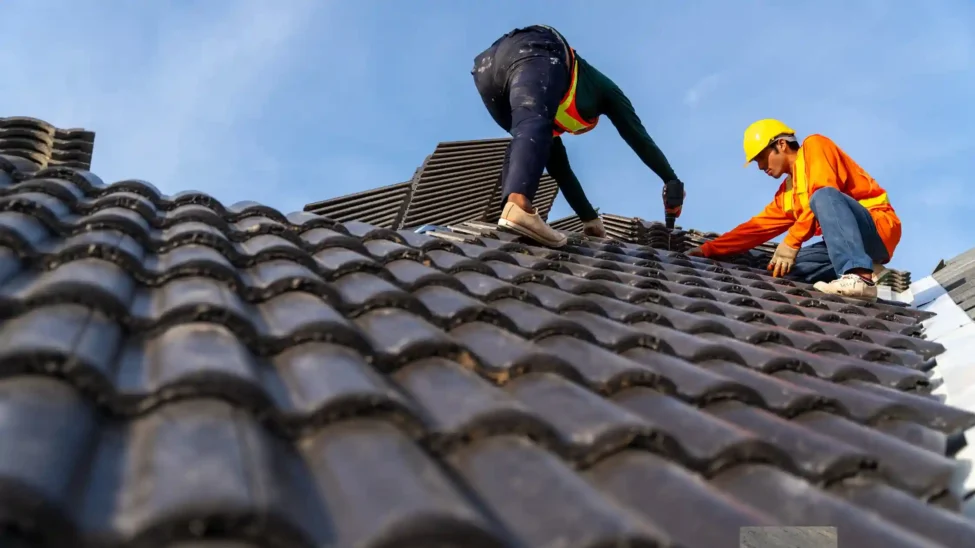
Types of Roofs in Building Construction: An In-Depth Guide
Types of roofs in building construction are a vital aspect of any project. A roof not only provides shelter but also significantly impacts the durability, energy efficiency, and aesthetic appeal of a building. Whether you’re a homeowner, an architect, or someone interested in building construction, this guide will explore different types of roofs in building construction, including their structure and materials, while highlighting their importance in design and safety.
What Is Roof?
Before discussing types of roofs in building construction in India or around the world, it is first crucial to define what is roof. A roof is described as that part of a building which covers it from all sides and protects it from scorching heat, raindrops, snowfall, and major wind currents. Thus, it is easily said that any structure, without its roof, is not considered complete. A roof, therefore, is a significant part of any structure.
What Are the Types of Roofs in Building Construction?
When considering the types of roof in building construction, there are quite a few varieties with each kind being a specialty. Depending upon climatic, design requirements and material availability of a building, one decides what to adopt as a roof structure. Now let’s talk of the popular varieties used for roofing purposes in a building.
1. Gable Roof
The gable roof is the most popular types of roof in building construction. It is characterized by having two sloped sides joining at a ridge, creating a triangle. Such a roof type is very ideal for areas with much rainfall; the sloped design helps water to drain easily. It’s easy, cost-effective, and provides excellent aesthetic appeal for residential buildings.
Advantages
- Excellence in water drainage.
- Has a simple design, hence easy construction.
- Offers additional space for an attic.
Disadvantages
- Not suitable for areas prone to high winds unless reinforced.
Learn more about Gable roof through Wikipedia.
2. Hip Roof
A hip roof is the one in which slopes exist at all four sides and meets to form a ridge at the top. This types of roof in building construction of sloping design provides much stability and makes it wind resistant. This can be ideal for buildings located in areas with high intensity weather conditions. It is very common for residential buildings, especially seen in suburban and rural areas.
Advantages:
- Much more wind-resistant.
- More stable than the gable roof.
- Able to sustain any climatic conditions.
Disadvantages:
- More intricate and expensive compared to the gable roof.
Check out Britannaica.com for more info about Hip roof.
3. Flat Roof
A flat roof nearly has a surface almost level. This types of roof in building construction are slopped a little so that water drains out from the surface. They can be seen in most commercial buildings as well as some of the modern residential buildings. It can be installed over areas that don’t receive much rain and is perfect for the installation of solar panels, a green roof, or an outdoor living area.
Advantages:
- Provides open space out of doors.
- Lighter in construction and up-keep.
- Suitable for building contemporary houses.
Disadvantages:
- Needs drainages not to pile-up water.
- Cannot be used on some areas since it cannot take heavy rainfall
Want to learn more? Visit Cox Roofing for in-depth information.
4. Mansard Roof
This types of roof in building construction has four sides, each with two slopes. The bottom slope is greater than the upper one. A mansard roof gives much usable space to an attic, unlike other roofs, which would add less useful areas to a space. A type of mansard roof is French architecture and used in historic buildings.
Advantages:
- Increases available living space inside the attic
- Extremely high curb appeal.
Disadvantages:
- This design is complex, making it a costly option
Learn more about the Mansard roof in Testbook.
5. Shed Roof
A shed roof is one single sloped roof, generally associated with modern architecture. This types of roof in building construction is simple and minimalist and thus mainly ideal for small residential and industrial buildings. The shed roof would allow for a great amount of natural light and can be applied in creating modern effects.
Advantages
- Simple yet inexpensive.
- Perfect for modern designs.
- Plenty of natural light.
Disadvantages
- Not suitable for locations under heavy snowfall.
- Limited aesthetic variety.
For more info about Shed roof, visit Tata Steel Aashiyana.
Roof Construction Materials: Types of Roofs in Building Construction
The material used in the construction of a roof mostly determines its durability, aesthetic appeal, and functionality. The available roof covering materials are diverse. Each one comes with unique advantages. Here are some of the most common types of roofs construction materials in building construction:
1. Asphalt Shingles
Asphalt shingles are one of the most commonly used materials for roofing. It is cheap, easy to install, and can be found in a wide range of colors and styles. Asphalt shingles are tough and can hold many conditions, hence suitable for residential buildings.
2. Clay and Concrete Tiles
Clay and concrete tiles are so durable, so they are actually used in various areas with severe temperatures or raining conditions. There is excellent thermal insulation, thus being fire-proof. They indeed cost more money than asphalt shingles, though they last and can endure intense conditions.
3. Metal Roofing
Metal roofs have become more common as they have long life cycles and energy efficiency. They do not get destroyed easily even if heavy rain pours, snowfalls, or storms with powerful gusts blow.
It is not heavy to put on. Several types of material are used like steel, aluminum, and copper for the preparation of metal roofs.
4. Wood Shingles or Shakes
Traditional roofing materials made from wood shingles or shakes provide a natural look that may be commonly associated with wood. However, this material is best suited to mild climates. Wood also insulates well but keeps rot and insects at bay with regular maintenance.
5. Green Roofs
A growing trend in eco-friendly building designs, green roofs are a roof on which vegetation is grown. Such a roof insulates, reduces energy costs, and provides an environmentally friendly alternative to traditional roofing materials.
For more info about road construction materials, check out The Spruce.
Roof Types in India for Building Construction
The roof types in India depend on the climatic conditions, geographical location, and cultural habits. Some of the most popular roof structures of Indian buildings are as follows:
1. Flat Roofs: These are mostly used in contemporary residential and commercial buildings, mainly in cities where the climate is hot.
2. Sloping Roofs: These are often used in places where there is heavy rainfall or snowfall as they allow easy drainage of water.
3. Thatched Roofs: Traditional and ecological, thatched roofs are the ones made out of natural stuff like straw grass or palm leaves. They generally occur in the rural areas
4. Mangalore Tile Roofing: Clay Mangalore tiles are very widely used in the coastal regions of the country, as they withstand heat and the salty air.
Check out The Architect Diary for more info.
Roof Height and Usability
Sometimes, the rooftop of a structure defines its intricacy in building design and it also defines opportunities for usable areas. A flat roof can be added to provide the space for some solar panels, or as the area for garden. Slope roofs can utilize attic space storage. Knowing for what purpose that roof level can be used thus determines the roof construction type suitable for a structure.
Conclusion
In conclusion, selecting a building’s roof is essential to guaranteeing its structural soundness, visual beauty, and use. The building’s performance in terms of energy efficiency, durability, and weather resistance can be greatly impacted by the kind of roof structure and materials utilized. Depending on the temperature, location, and design objectives, each roof type-gable, hip, flat, mansard, or shed, each have a distinct function. Making selections that are in line with the particular requirements of the building requires an understanding of the benefits and drawbacks of different roofing styles and materials. Whether your building is a residential or commercial construction, you can guarantee its lifespan, safety, and comfort by carefully evaluating the roof structure and materials.

FAQs on Roof Construction
What are the most common types of roofs used in residential buildings?
The most common types of roofs used in residential buildings are gable, hip, flat, and mansard roofs. Each offers different benefits depending on the climate and aesthetic preference.
What are the best roofing materials?
The best roofing materials depend on the location and budget. Asphalt shingles are inexpensive, but clay, concrete tiles, and metal roofs last for a long time. The other sustainable option is a green roof for those who care about the environment.
3.Why is the roof structure important in building construction?
The roof structure is important in that it provides stability to a building while it also protects a building from all kinds of weather and has an impact on the energy efficiency of the building. It also affects the aesthetic appeal of the whole building.



